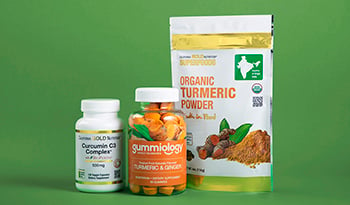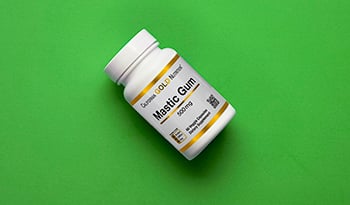Genel Sağlık İçin En İyi 8 Çocuk Takviyesi

Sağlıklı proteinler, yağlar, vitaminler ve mineraller bakımından zengin, dengeli bir besleyici diyet, sağlıklı bir çocuğun büyümesi için gereken en önemli şeylerden biridir. Kronik besin eksiklikleri, özellikle çocukluk döneminde, kronik, uzun vadeli sağlık sorunları riskini artırabilir.
Beslenme eksiklikleri, sürekli olarak besin açısından fakir gıdalar tüketmekten veya besinlerin emilim bozukluğundan kaynaklanabilir. Bu tür besleyici gıda eksiklikleriyle mücadeleye yardımcı olmak için, Amerika Birleşik Devletleri 1920'lerde gıda takviyesine - diyet temel ürünlerine mikro besin ekleme uygulaması - başladı1. 2020 yılına kadar 83 ülke şu anda un, mısır ve pirinçle ilgili gıdaların takviyesine ihtiyaç duyuyor. Yine de, dünya çapındaki çocukların yüzde 60'ı takviye edilmiş gıdalar tüketmiyor.
Gıda takviyesi örnekleri şunları içerir:
- Guatrları (boyun kütleleri) önlemeye yardımcı olmak için tuzun iyotlanması
- D vitamini raşitizmi önlemek için süte eklendi (zayıf kemikler)
- Un ürünlerine eklenen tiamin gibi B vitaminleri
Çocuklarda sık görülen beslenme yetersizliği hastalıkları2
- Demir eksikliği — Anemi
- D vitamini eksikliği — Raşitizm, zayıf büyüme
- İyot eksikliği — Guatr, zihinsel gecikme
- C vitamini eksikliği — İskorbüt, morarma
- Kalsiyum eksikliği — Raşitizm ve zayıf kemikler (kalsiyumu emmek için D vitamini gereklidir)
- Biotin eksikliği - Genellikle genetik bir bozuklukla ilişkilidir
- A vitamini eksikliği — Gece körlüğü, enfeksiyonlara yatkınlık, büyüme gecikmesi
- Vitamin B12 eksikliği — Anemi
- Çinko eksikliği — Büyüme geriliği, bozulmuş bağışıklık sistemi
Aşağıdakiler çocuklar için önemli besinlerdir.
1. Demir
demir eksikliği, dünya çapında çocuklarda en sık görülen beslenme eksikliklerinden biridir ve yüzde 30 ila 40 3 arasını etkiler. Anne sütüyle beslenen bebeklerde, anne de demir eksikliği olmadığı sürece demir eksikliği nadirdir. Günde 24 ons'tan fazla inek sütü içen 12 aylıktan büyük çocuklar demir eksikliği riski altındadır. Bu, sütün bağırsakları tahriş etme potansiyeli nedeniyle oluşur ve kronik kan kaybına neden olur.
Demir eksikliğinin belirtileri arasında yorgunluk, solgunluk, buz arzusu, kırılgan tırnaklar, baş dönmesi ve nefes darlığı bulunur.
Demirin besin kaynakları şunları içerir:
- Tavuk ve hindi
- Kabuklu deniz ürünleri
- Organ eti
- Fasulye, mercimek ve soya fasulyesi
- Bitter çikolata
- Ispanak, lahana ve diğer yeşil yapraklı sebzeler
- Kabak çekirdeği
- Yumurta
- Fıstık ezmesi
- Kuru üzüm
- Tofu
2. D vitamini
D vitamini eksikliği çocuklarda sık görülür ve test edilenlerin yüzde 60 ila 70'ini etkiler. Güneş ışığına maruz kalmanın azalması nedeniyle özellikle kış ve ilkbahar aylarında yaygındır. Geleneksel olarak, ciddi derecede düşük D vitamini seviyeleri raşitizm ile ilişkilidir ve bu da bacakların şiddetli eğilmesine neden olur. Düşük D vitamini seviyeleri ayrıca kemik ağrısı (osteomalazi ve büyüme ağrıları), zayıf büyüme, sedef hastalığı ve üst solunum yolu enfeksiyonları için artan risk riskini artırabilir.
Daha koyu ten pigmentine sahip olanlar, güneşte yeterli zaman geçirilse bile D vitamini eksikliği için daha yüksek risk altındadır. Pigmentasyona neden olan protein olan melanin, cildin D vitamini yapması için gereken ultraviyole ışığı (UV ışığı) engelleyen “doğal bir güneş kremi” görevi görür.
Daha yaygın hale gelen çocukluk çağı obezitesi de D vitamini eksikliği için bir risk faktörüdür.
Anne sütü genellikle zayıf bir D vitamini kaynağı olarak kabul edilir, ancak bunun nedeni emziren annelerin çoğunun da eksik olmasıdır. Emziren annelerin çoğu, sütlerinin D vitamini ile dolu olmasını sağlamak için günde en az 6.000 IU'ya ihtiyaç duyarlar. Hamile kadınlar da sıklıkla günde 2.000-5.000 IU takviye eder.
Birçok çocuk doktoru, yaşamın ilk yılında bebeklerde D vitamini takviyesi önermektedir. Ulusal Bilimler, Mühendislik ve Tıp Akademileri, günde 600 IU'yu (ancak en fazla 1.000 IU) verilebileceğini belirtiyor. Çocuklar için güvenli üst sınırların yaşa bağlı olduğunu öne sürüyorlar.
- 1 ila 3 yaş arası çocuklar - günlük maksimum 2.500 IU
- 4 ila 8 yaş arası çocuklar - günlük maksimum 3.500 IU
- 9 yaş ve üstü çocuklar - günlük maksimum 4.000 IU ile sınırlıdır
Endokrin Derneği, çocuklar için daha yüksek bir doz sınırı önerir ve 12 aya kadar olan bebekler için 2.000 IU'luk bir üst sınır önerir. 1 yaşın üzerindekiler için günlük 4.000 IU'ya kadar bir doz kabul ederler.
Herhangi bir sorunuz varsa doktorunuza danışın. D vitamini sıvı damlalar, sakız formülasyonları ve kapsüllerde bulunur.
3. İyot
İyot sadece tiroid sağlığı için değil, aynı zamanda üreme sistemi ve beynin doğru gelişimi için de önemlidir. Dünya çapında, bu, öncelikle dünyanın çeşitli yerlerindeki topraklardaki düşük iyot içeriğinden dolayı en yaygın eksikliklerden biridir. 2004 yılında Türkiye'de yapılan bir araştırma4 okul çağındaki çocukların yüzde 46'sının yetersiz olduğunu gösterdi.
İyot besin kaynakları
- Deniz Yosunu
- Karides
- Kod
- Ton balığı
- Süt
- Yoğurt
- Peynir
Çocuğunuzun gıda yoluyla yeterli iyot alamayabileceğinden endişe ediyorsanız, bir takviye düşünülebilir. Çoğu çocuk için, çocuk doktorunuz tarafından daha yüksek bir doz önerilmedikçe multivitamin içindeki iyot miktarı yeterlidir. Önerilen doz: Etikette önerildiği gibi.
4. C Vitamini
2004 yılında yapılan bir araştırmaya göre5, erkeklerin yüzde 14'ü ve kadınların yüzde 10'u C vitamini eksikliğiydi. Buna çocuklar dahildir - 12 ila 17 yaş arasındaki çocukların yüzde 6'sı düşük kan C vitamini seviyesine sahiptir. Diş eti kanaması, kolay morarma ve yavaş iyileşen yaraların yanı sıra, zayıflamış kemikler bu eksikliğin ciddi bir sonucudur ve çocuklar büyüdükçe uzun vadeli etkileri vardır. Ancak neyse ki C vitamini, birçok çocuğun zevk aldığı birçok yaygın gıdada bulunur.
Meyve C vitamini kaynakları
- Acerola kirazları
- Avokado
- Guava
- Papaya
- Mango
- Portakal
- Ananas
- Kavun
- Kivi
- Çilek
Bitkisel C vitamini kaynakları
- Dolmalık biber
- Çin lahanası
- Brokoli
- Lahana
- Kale
- Brüksel lahanası
- Patates
Diyet yoluyla yeterli C vitamini tüketimi mümkün değilse, takviye düşünülmelidir. Gummie formülasyonları çocuklar arasında popülerdir ve kapsüller ve toz takviyeleri de mevcuttur. Çoğu çocuğun günde 250 mg'dan fazla ihtiyacı yoktur, ancak 12 yaşın üzerindekiler güvenle günde 500 mg alabilir.
5. Multivitamin
A çocuk multivitaminleri , en az miktarda çeşitli vitamin ve minerallerin tüketilmesini sağlamanın harika bir yoludur. Kaliteli bir multivitamin kalsiyum, biyotin, A vitamini, E vitamini, çinko ve çok daha fazlasını içerir. Pediatrik multivitaminler sıvı, sakız veya kapsül formülasyonlarında gelir.
6. Melatonin
Uyku sorunu yetişkinlere özgü değildir ve çocuklar da etkilenebilir. Bir çalışma6 çocukların yüzde 4'ünün (25'te 1'inde) uyku sorunları olduğunu gösterdi. Bununla birlikte, ilaç tedavisi ideal bir yaklaşım değildir, çünkü mümkün olduğunda çocuklarda reçeteli ilaçlardan kaçınmak önemlidir. Çocuğunuzun uyku güçlüğü varsa, temel nedenini değerlendirmek kesinlikle gereklidir - her yaşta düşük uyku kalitesinin yaygın nedenleri anksiyete, depresyon, alerji veya uyku apnesi gibi ciddi durumları içerebilir. Bu olasılıklar değerlendirildikten ve göz ardı edildikten sonra, uyku döngüsüne yardımcı olan doğal bir hormon olan 1 ila 3 mg melatonindüşünülebilir. Melatonin yatmadan yaklaşık iki saat önce alınmalıdır. Çocuk formülasyonları sıvılar, çiğnenebilir maddeler ve sakızları içerir.
7. Omega-3 Yağ Asitleri
Omega-3 yağ asitleri küçük çocukların büyüyen beyinleri için önemlidir. Bununla birlikte, dünyanın birçok yerinde çocuklar, gerekli olan esansiyel yağ asitleri bakımından zengin yiyecekleri yemezler. Bu gecikmiş büyümeye, cilt sorunlarına ve nörolojik sorunlara neden olabilir.
Omega-3 yağ asitleri şunları içerir:
- alfa-linolenik asit (ALA, bir omega 3 yağ asidi), keten tohumu, ceviz, soya, chia tohumuve kenevir tohumundabulunur.
- Eikosapentaenoik asit (EPA veya ikosapentaenoik asit), yaygın olarak balık yağı, krill yağıve yumurtalarda (tavuklar EPA ile beslenmişse) bulunur.
- Dokosaheksaenoik asit (DHA, bir omega-3 yağ asidi), insan beyninin, derisinin ve gözlerinin büyük bir bileşenidir. Önemli olmasına rağmen, yeterli miktarda alfa-linolenik asit (ALA)alındığında vücut tarafından üretilebileceğinden “gerekli” olarak kabul edilmez.
Omega-3 Yağ Asitlerinin aşağıdakiler için faydaları olabilir:
- DEHB — 2016 yılında yapılan bir çalışma7 , omega-3 yağ asitlerinin DEHB semptomları olanların tedavisinde faydalı olabileceğini göstermiştir.
- Astım — Nutrition Research Reviews8 2016 tarihli bir araştırma, omega-3 balık yağı takviyesinin astım hastalarına fayda sağlayabileceği sonucuna varırken, 2016 yılında Cytokine9 üzerinde yapılan bir başka çalışma, omega-3'ün astımı yönetmek için umut verici bir tamamlayıcı yaklaşım olduğu sonucuna varmıştır.
Omega-3 yağ asitleri sıvı, çiğnenebilir ve sakızlı formülasyonlarda bulunur.
8. Probiyotikler
çocuk probiyotiklerini seçmeye gelince, bunalmış olmak kolaydır. Piyasada pek çok farklı tür ve tür var. Ve probiyotikler hakkındaki bilgimiz son on yılda önemli ölçüde artmış olsa da - son 10 yılda konuyla ilgili yaklaşık 20.000 bilimsel rapor yayınlandı - hala yararlılıklarını ve faydalarını anlamaya yeni başlıyoruz. Bununla birlikte, çocuklarda yararlı olduğuna inanılmaktadır ve antibiyotik kullanım öyküsü olanlar için probiyotikler şiddetle düşünülmelidir.
Probiyotikler genellikle her yaş ve sağlıklı işleyen bir bağışıklık sistemine sahip herkes için güvenli kabul edilir. Çocuğunuz bağışıklığı zayıfsa veya kanser tedavisi görüyorsa, takviye etmeden önce çocuk doktoruna danışın.
Toplamda, çoğu insanın vücutlarında, çoğunlukla bağırsakta olmak üzere 40 ila 50 trilyon bakteri olduğu tahmin edilmektedir. Bu, mevcut tahmini 30 trilyon insan hücresinden fazla10 . Yenidoğanın bağırsağının tohumlanması, doğum kanalından geçiş meydana gelirse çoğu zaman doğumda başlar. Ayrıca, anne sütüyle beslenirse, anneden gelen cilt bakterileri mikrobiyom çeşitliliğinin sağlanmasına yardımcı olur.
Geleneksel olarak, probiyotikler aşağıdakiler için dikkate alınır ve kullanılır:
- Kabızlık, gaz veya asit reflü gibi sindirim sorunlarını yatıştırmaya yardımcı olur
- İnfantil koliklerin hafifletilmesine yardımcı olur
- İrritabl bağırsak sendromu yönetimi
- Crohn hastalığı ve ülseratif kolit yönetimi
Çocuklar ve yetişkinler için önerilen minimum probiyotik dozu genellikle 5 milyar CFU'dur (koloni oluşturan birimler). Gençler ve yetişkinler günde bir veya iki kez 100 milyar CFU alabilir. Probiyotikler kapsüller, çiğnenenler, tozlar ve sakızlı formüller halinde gelir. Yaygın suşlar arasında lactobacillus, bifidobacteria, saccharomyces veya bunların bir kombinasyonu bulunur.
Soğuk algınlığı ve grip takviyeleri
Hastayken, hastalık semptomlarını azaltırken daha güçlü bir bağışıklık sistemini desteklemeye yardımcı olabilecek birçok öksürük, soğuk algınlığı ve grip takviyesi de mevcuttur. 2012 yılında yapılan bir inceleme çalışması11 , çocuklar için buharlı ovma ve karabuğday balı önerdi. Enfeksiyonları önlemeye yardımcı olmak için probiyotik, çinko sülfat ve nazal salin sulamasıönerdiler. C vitamini ve mürver formülasyonları da düşünülebilir.
Referanslar:
- Erişim tarihi: 25 Mayıs 2020 http://web1.sph.emory.edu/users/hpacho2/PartnershipsMaize/Bishai_2002.pdf
- Erişim tarihi: Mayıs 24 saat, 2020 http://learnpediatrics.sites.olt.ubc.ca/files/2011/08/GI_-_Nutritional_Deficiencies.pdf
- Dünya Sağlık Örgütü. Programcı yöneticileri için bir rehber. Cenevre (İsviçre): Dünya Sağlık Örgütü; 2001. Demir eksikliği anemisi değerlendirmesi, önlenmesi ve kontrolü.
- Gür E, Ercan O, Can G, vd. Okul çocukları arasında iyot eksikliğinin yaygınlığı ve risk faktörleri. J Trop Pediatr. 2003; 49 (3) :168‐171. doi:10.1093/tropej/49.3.168
- Hampl JS, Taylor CA, Johnston CS. Amerika Birleşik Devletleri'nde C Vitamini eksikliği ve tükenmesi: Üçüncü Ulusal Sağlık ve Beslenme Muayene Araştırması, 1988-1994. Am J Halk Sağlığı. 2004; 94 (5): 870‐875. doi: 10.2105/ajph.94.5.870
- Meltzer LJ, Johnson C, Crosette J, Ramos M, Mindell JA. Pediatrik birinci basamak bakım uygulamalarında teşhis edilen uyku bozukluklarının prevalansı. Pediatri. 2010; 125 (6): e1410 ‐ e1418. doi: 10.1542/peds.2009-2725
- Kraliçe A, Kiliaan AJ. Dikkat eksikliği/hiperaktivite bozukluğu tedavisinde omega-3 yağ asitlerinin eleştirel değerlendirmesi. Nöropsikiyatr Dis Treat. 2016; 12:1869-82. Yayınlanma tarihi: 2016 Temmuz 26. doi:10.2147/ndt.s68652
- Nutr Res Rev. 2016 Haziran; 29 (1) :1-16. doi: 10.1017/S0954422415000116. Epub 2016 Ocak 26.
- Farcadian, Moghtaderi, Kalani, Gholami ve Hosseini Teshnizi. (2016). Astımlı çocuklarda omega-3 yağ asitlerinin T-yardımcı sitokinlerinin serum seviyeleri üzerindeki etkileri. Sitokin, 85, 61-66.
- http://www.microbiomeinstitute.org/blog/2016/1/20/how-many-bacterial-vs-human-cells-are-in-the-body
- Fashner J, Ericson K, Werner S. Çocuklarda ve yetişkinlerde soğuk algınlığı tedavisi. Ben FAM Doktorum. 2012; 86 (2): 153-159.
FERAGAT:SAĞLIK MERKEZİ tanı koymayı hedeflememektedir...













































































 İçindekiler
İçindekiler
















